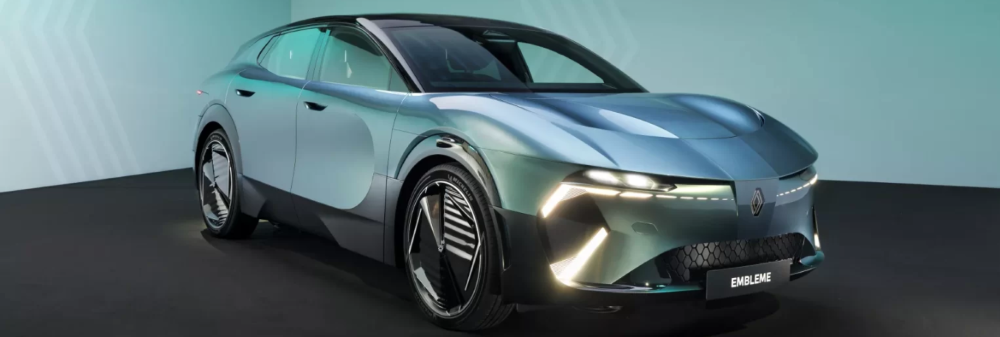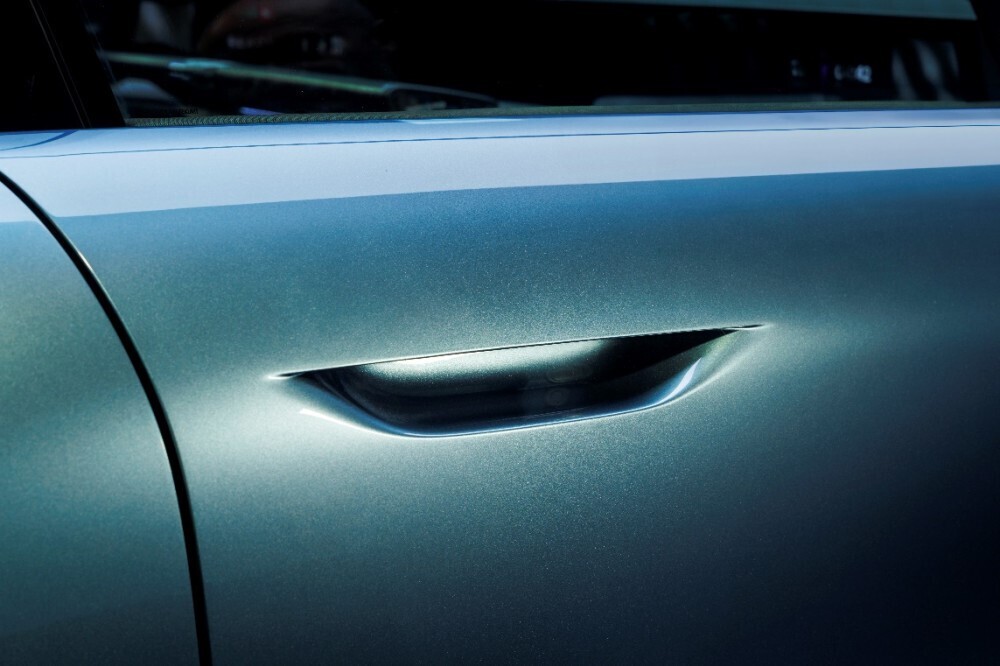

Travelling has not only become more comfortable but also sustainable. Just imagine a car that ensures luxury however looks forward to promote a greener environment. In addition, Renault’s Emblème redefines sustainable automotive design by seamlessly blending intelligent resource use with aesthetic and functional innovation.

Renault Group is emerging as a leader in low-carbon transportation. In alignment with the Paris Climate Agreement of 2015, the Group reshaped its strategy to significantly cut greenhouse gas (GHG) emissions and help keep global temperature rise well below 2°C.
“The ambition of the Renault Emblème project was to achieve maximum decarbonisation by designing a car that is attractive, efficient, family-friendly, comfortable, high-tech and versatile in use. More than a concept car, it’s a demo car on the road that’s a pleasure to look at, to be in and to drive – a real invitation to travel!, said Fabrice Cambolive, CEO of Renault Brand.
Through carefully considered choices in materials, production methods, and end-of-life recovery, it achieves an impressive 70 per cent reduction in the carbon footprint of its components. Half of the materials used like aluminium, steel, polymers used in the car are recycled, and nearly all are recyclable at the end of their lifecycle.
All these key materials are responsible for 90 per cent of the Renault Emblème’s total carbon footprint. Emblème is a true invitation to journey—with a cabin that blends modern sophistication with a poetic touch. At its heart lies innovation, featuring a wide openR panoramic screen that stretches seamlessly across the dashboard, redefining in-car experience.
Renault Group’s decarbonisation strategy
Renault Group’s decarbonisation strategy—focused on reducing greenhouse gas emissions and lowering its overall carbon footprint—considers the entire life cycle of each vehicle. Using a robust, well-established methodology, emissions are measured in tonnes of CO₂ equivalent at every stage of the vehicle’s life, from production to end-of-life.
Committed to achieving carbon neutrality, Renault aims for net zero emissions by 2050 globally and by 2040 in Europe. This bold ambition is powered by Ampere, the Group’s dedicated entity for intelligent electric vehicles. Leading this transformative movement is Renault Emblème—a symbol of the brand’s commitment to a cleaner, smarter automotive future.
“Renault Emblème rises to the challenges of decarbonisation. It concentrates the engineering and innovation solutions necessary for the cars designed and produced by Renault Group to aim for net zero carbon. It embodies decarbonised and resource-respectful mobility, conceived from design to end of life, in an ecosystemic and collective manner, with our partners and suppliers across the entire value chain. In addition to providing a preview of upcoming design silhouettes, it incorporates technologies developed by Ampère, which will be gradually introduced in the next generations of vehicles,” Cléa Martinet, VP Sustainability, Renault Group.
Moreover, Renault took a collaborative approach to eco-design, bringing together a diverse network of industrial partners to carefully select and optimise materials for the Emblème. This forward-thinking alliance included AKWEL, Autoneum, ArcelorMittal, CEA (French Alternative Energies and Atomic Energy Commission), Constellium, Dicastal, Forvia, Forvia / Hella, Michelin, OPmobility, STMicroelectronics, Valeo, and Verkor.
Rigorous specifications governed every aspect of the vehicle’s composition—from steel and aluminium to plastics, glass, tyres, and electronic systems. This meticulous attention to detail enabled Renault to achieve a remarkable 70% reduction in the carbon footprint associated with parts production.
The rims of the Renault Emblème embody eco-design principles, featuring a near-solid wheel design that enhances aerodynamic performance. Lightweight and refined, each wheel weighs just 16.5 kg, with an additional 0.88 kg for the add-on. Crafted from aluminium sourced 70 per cent from the circular economy, their production results in only 195 kg of CO₂ equivalent emissions—striking a balance between sustainability, efficiency, and style.
Aluminium doors from Constellium

One of aluminium’s greatest strengths is its ability to be recycled endlessly without any loss in quality. Producing recycled aluminium for body panels requires just 5 per cent of the energy needed for primary aluminium production and generates significantly lower CO₂ equivalent emissions.
For the Emblème’s doors, Constellium combined low-carbon primary aluminium—produced via electrolysis using renewable electricity—with recycled aluminium sourced from the circular economy. This approach highlights aluminium’s powerful potential for long-term circularity in automotive design.
“With Emblème, we wanted to bring the automotive industry’s ecosystem towards more sustainable mobility. This decarbonisation laboratory is designed to operate without any compromise on all features such as comfort, safety, and connectivity. It is the result of an exploratory, horizontal, and collective approach. Between Renault Group and 20 partners, all experts in their fields, barrier-free innovation has enabled us to reach the ambitious decarbonisation target set at the beginning of the project, Pascal Tribotté, Project Manager Renault Emblème.
Underneath, the dual-energy electric powertrain combines electricity and hydrogen to enable low-carbon travel across both short trips and long hauls—an ideal fusion for the future of sustainable mobility.
Image Source: Renault



Responses






